Edinburgh hosts a distinctly Scottish send-off for Queen Elizabeth II
EDINBURGH, Scotland — Cannons boomed, ceremonial bodyguards brandishing longbows escorted the hearse, and all eyes were on the capital of Scotland — a country close to Queen Elizabeth II's heart, but also a place with its own often uneasy relationship to the crown.
The United Kingdom knows how to do pomp and ceremony. But on Monday, its 1,000-year-old royal family was at the center of a truly grand spectacle.
King Charles III led a royal procession behind the coffin of his mother as Britain's late, longest-serving monarch traveled up the narrow, cobbled street of Edinburgh's Royal Mile from the Palace of Holyroodhouse to St. Giles’ Cathedral.
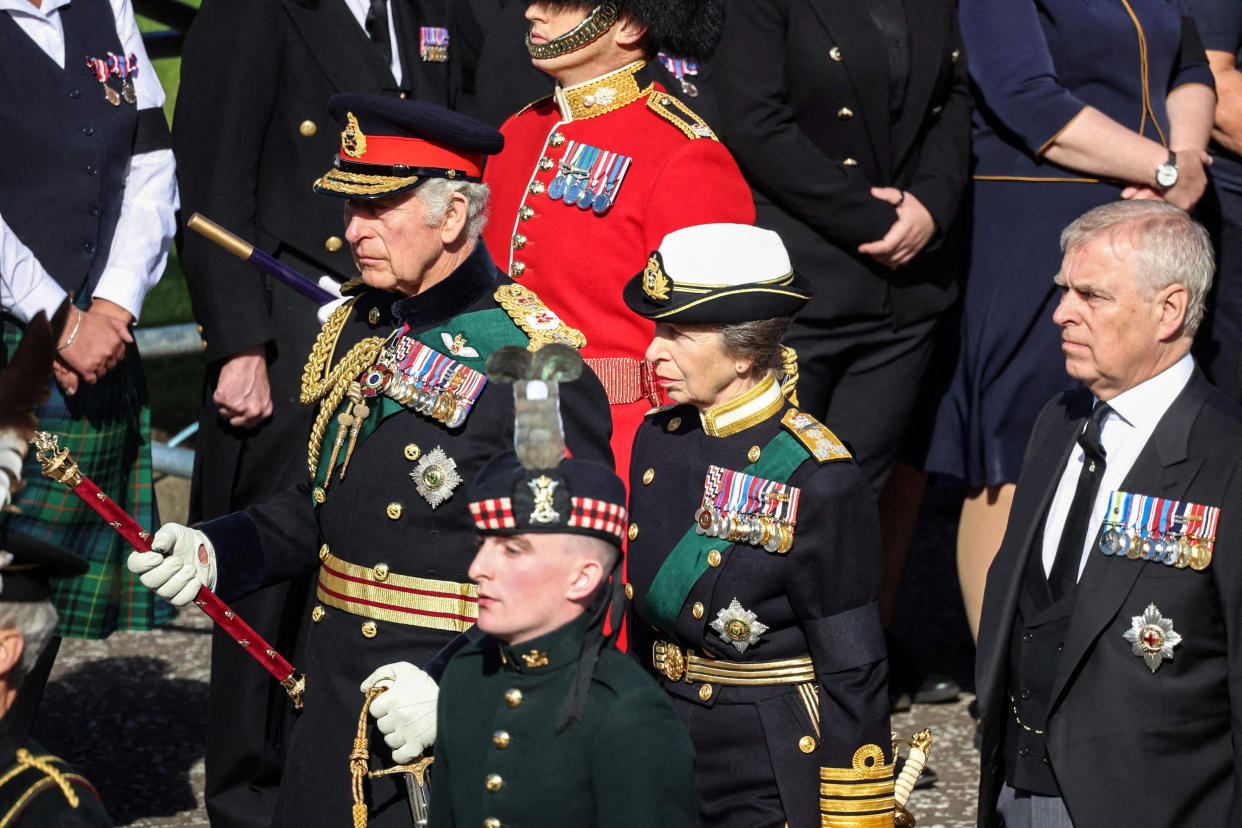
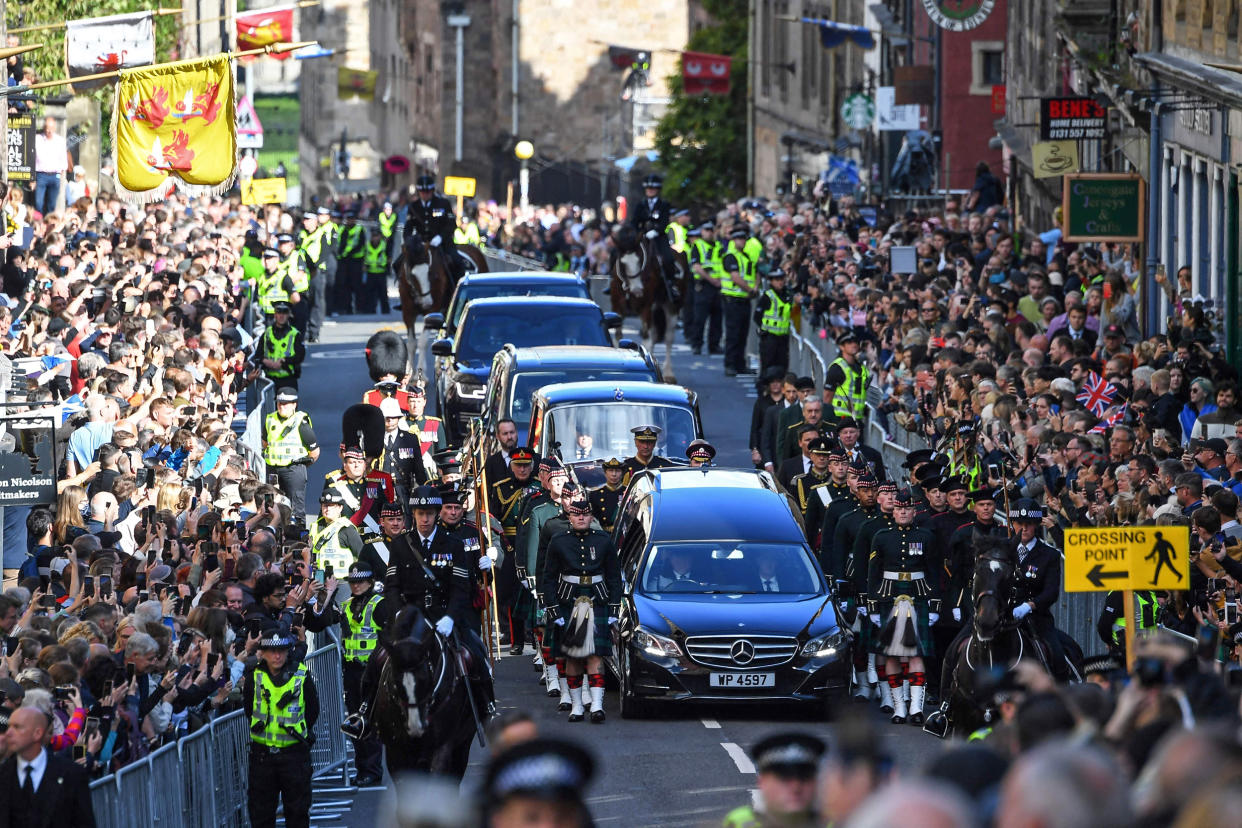
The grand spectacle was playing out in the Scottish capital, rather than London, because the queen's relatively sudden, if not unexpected, death came last week at Balmoral Castle, her cherished residence in the Highlands.
“The distinctly Scottish flavor of today and tomorrow shows how the United Kingdom has always been a union of distinct nations united by the crown,” said Craig Prescott, an expert in constitutional law and the monarchy at Bangor University in Wales. “It’s natural given the queen has died in Scotland, that Scotland has the chance to have its own moment before the focus turns to London.”
Years in the planning, this alternative playbook for Operation London Bridge means the queen's posthumous pageantry also reflects her own deep ties and affection for the country.
The queen’s mother, also called Elizabeth, came from a Scottish family, as did her first private tutor, Marion Crawford. The family has always taken summer vacations at Balmoral since Queen Victoria bought the estate in the 1850s.
Its 50,000 acres indulged the queen's love of the outdoors. Dressed in tweeds and headscarves, she enjoyed walking, stalking deer and fishing, sometimes with her husband, Prince Philip, often with her horses and corgi dogs in tow. Her grandsons Prince William, now the Prince of Wales, and Prince Harry were there in 1997 when they learned of the death of their mother, Princess Diana.
Many locals saw the queen as a neighbor, often running into her at the Highland Games held there every year.
But some Scots see this royal relationship in a less favorable light, a facet of a London-based rule that has spent centuries fighting battles against them (the U.K. national anthem features a line about crushing "rebellious Scots"), and no longer works in their interests.
Scotland is far less royalist than England, with some polls putting support for the monarchy as low as 45%. Intertwined with that is the belief among some campaigners that King Charles III’s ascension could boost the possibility of Scotland — and potentially Northern Ireland and even Wales — separating from the U.K. entirely.
The new king is generally less popular than the late queen, who had acted as a common anchor and source of shared pride between the four U.K. nations. Shorn of that cultural glue, some believe independence movements may gain a new impetus.
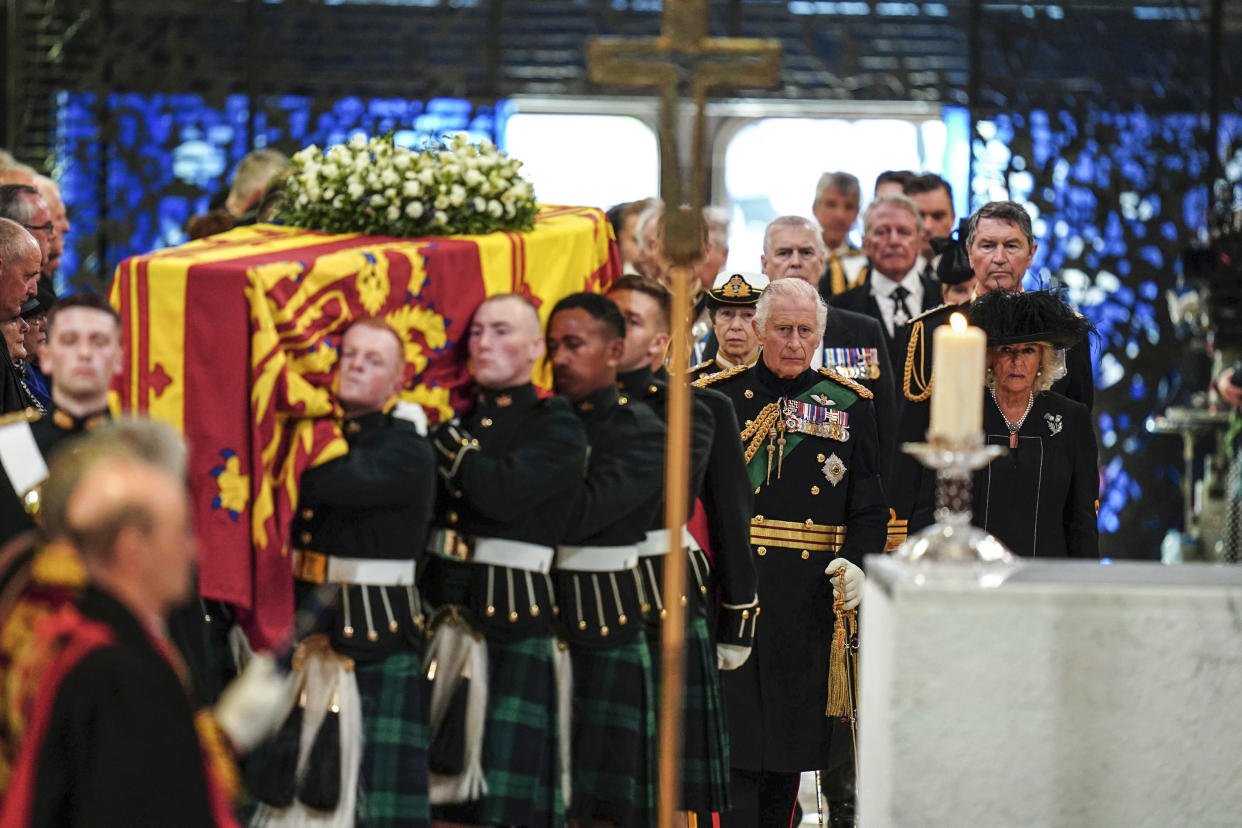
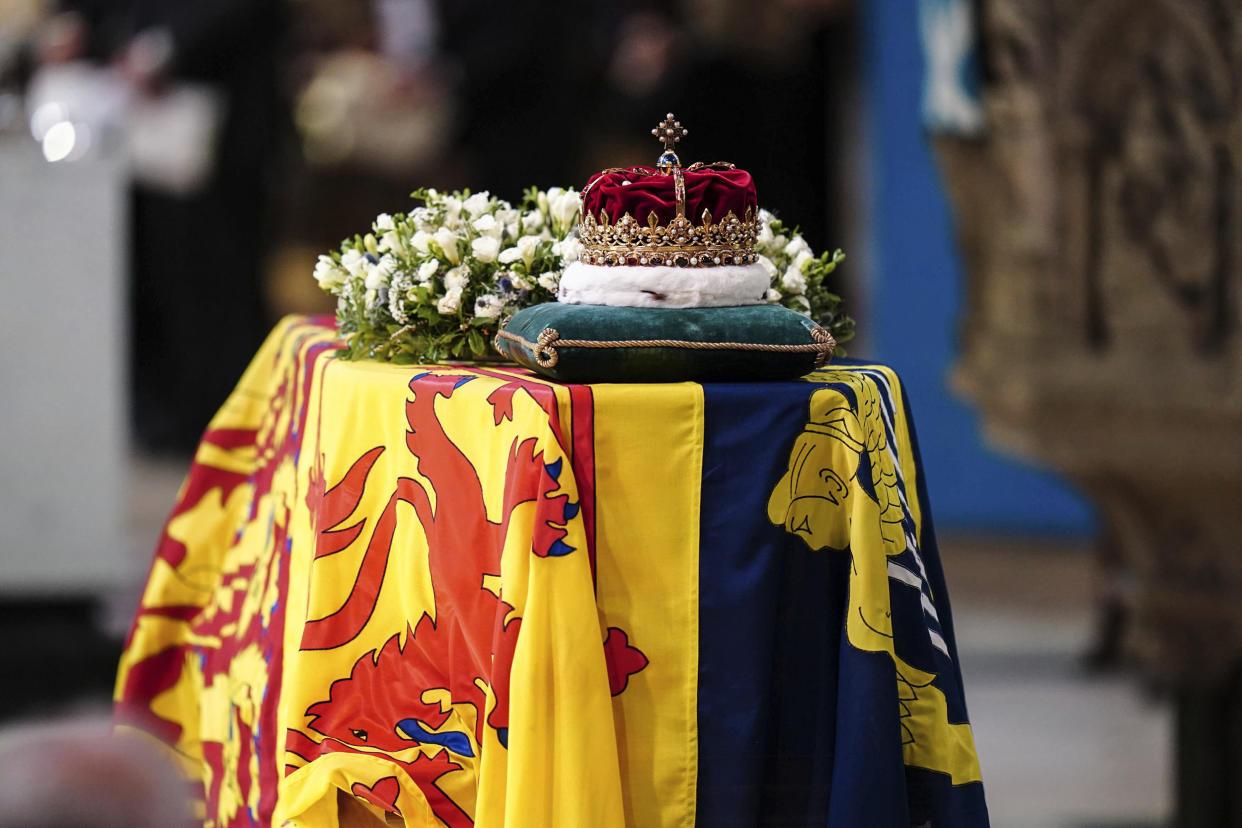
It's a complicated picture.
Not all anti-monarchists support independence, and not all pro-independence activists want to ditch the monarchy.
John Swinney, Scotland's deputy leader and a member of the pro-independence Scottish National Party, told the BBC on Monday of the "deep and warm relationship" between Scotland and the queen.
Indeed the Royal Mile was crammed with mourners, tourists and casual observers just there for the spectacle.
More than an hour before Charles was due to arrive, crowds were already four or five deep against the barriers outside.
Traditional Scottish tunes wafted from surrounding gift shops.
Catherine Vost, 69, and Anne Tullo, 62, traveled from nearby Glasgow for the king’s appearance.
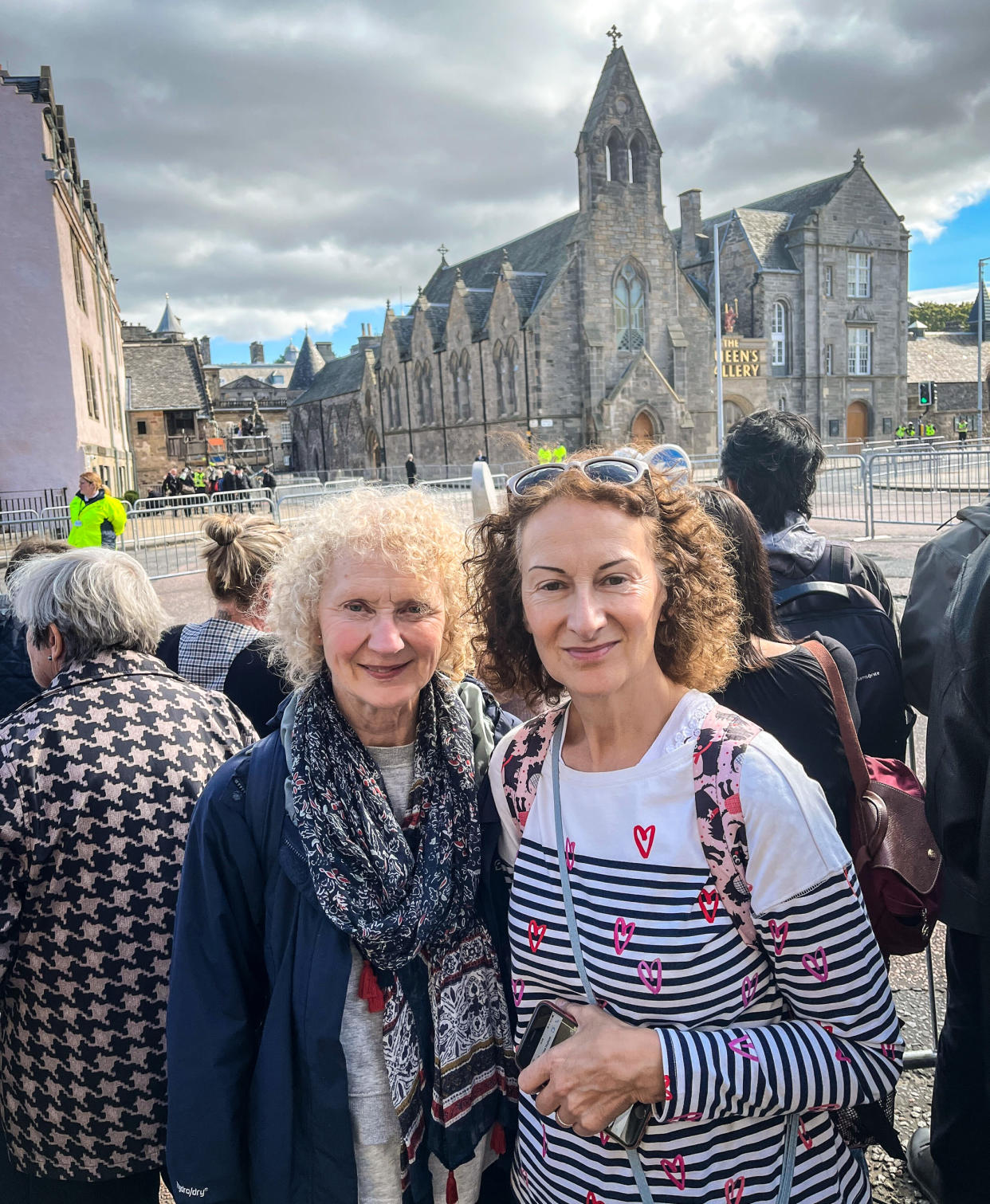
“We’re not moving now, we’ve got a good spot,” Tullo, who works as a driving instructor, said as she guarded her place near the barrier in the bright midday sunshine.
“We’re here to pay our final farewell to our amazing queen, who we have loved and followed all our lives,” Vost, a historian, added. “Charles will be very warmly welcomed, too.”
Millions more were watching at home, in Britain, the Commonwealth, the United States and beyond.
TV cameras were already trained on Charles in the morning as he addressed Parliament for the first time as king before heading north to Scotland.
He and Camilla, the Queen Consort, were welcomed by a 21-gun salute, a guard of honor and a military band playing the first verse of the national anthem — now tweaked to “God Save the King."
He and other royals then visited the Holyroodhouse throne room, where the queen's coffin was being kept. It then began the solemn journey to the cathedral, with Charles leading some royals on foot while other family members followed in cars. A drumbeat of guns fired at one-minute intervals from Edinburgh Castle, which sits atop a plinth of volcanic rock overlooking the picturesque city.
The procession crawled its way to the cathedral, where the queen will lie at rest for 24 hours so the public has a first chance to pay its respects.
Many see this Scottish send-off as fitting.
The modern British sovereign was born from the union of “two crowns," when James VI of Scotland became James I of England in 1603 after the death of Queen Elizabeth I, as Prescott at Bangor University points out.
Few doubt the late queen's love of the highlands was deeply and genuinely felt. But the roots of the monarch’s Scottish identity are also rooted in dispute and controversy.
Some historians say that the tartan, Highland Games and other Scottish trappings were co-opted by the London-based monarch starting in the 1820s, an attempt win favor among restive Scots.
The late queen knew the importance of symbolism and set-piece events to preserve the enduring popularity and legitimacy of the sovereign itself.
“One must be seen to be believed,” she once said, famously. And Monday, the royals were certainly seen.
